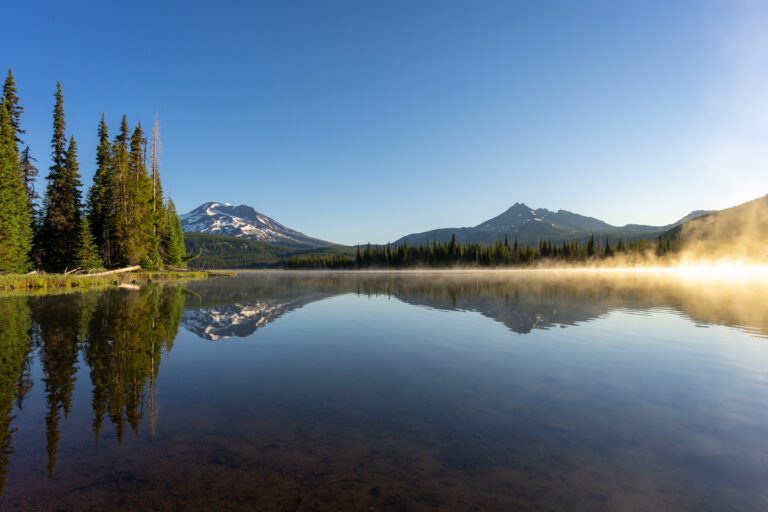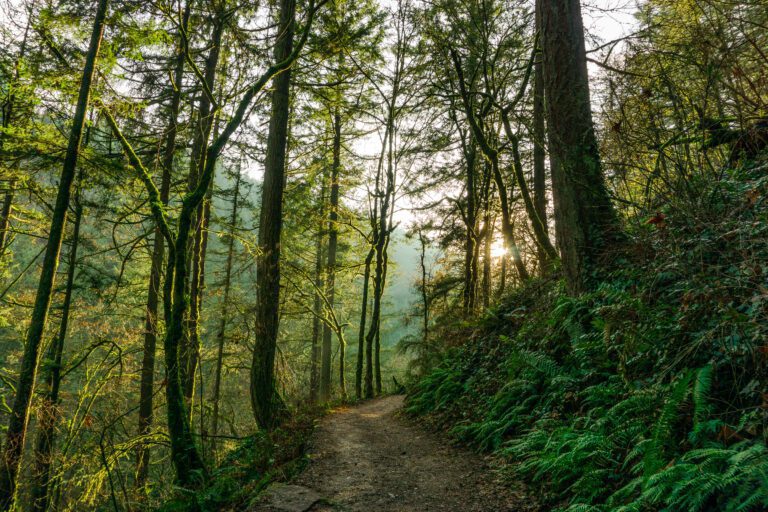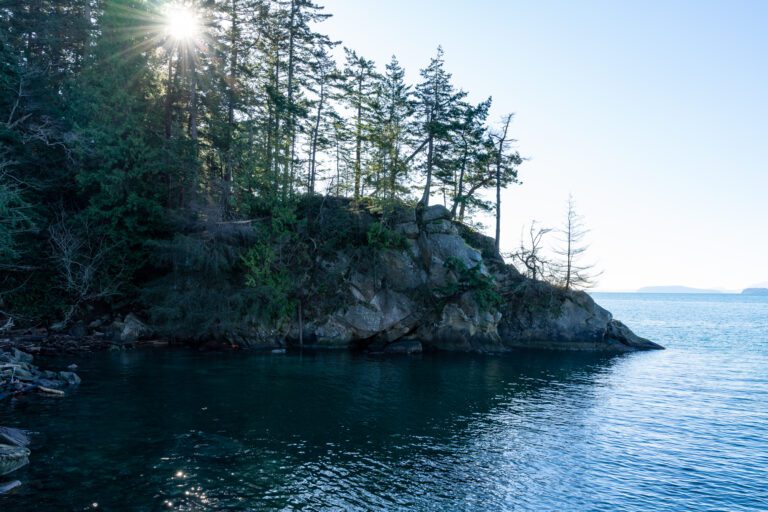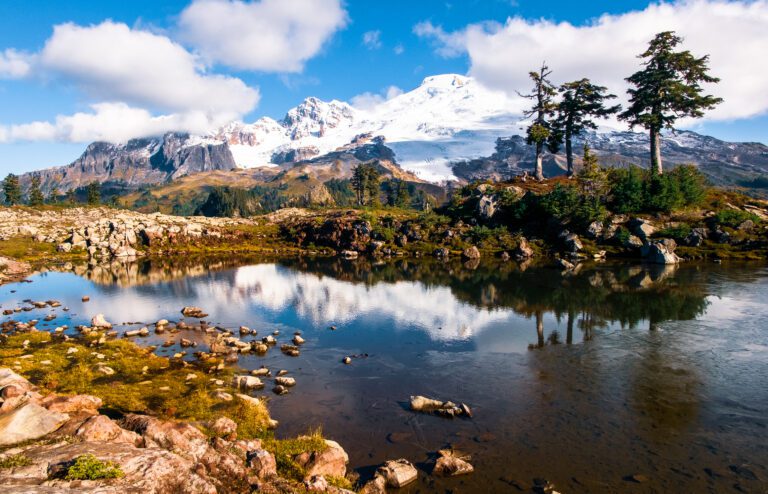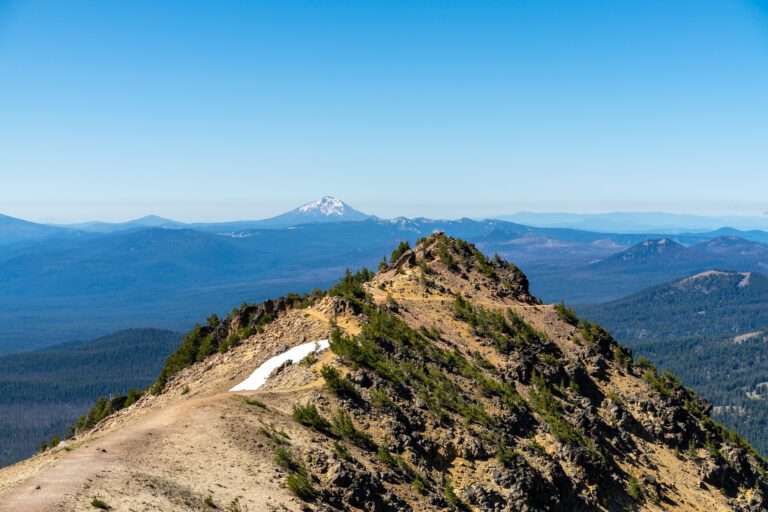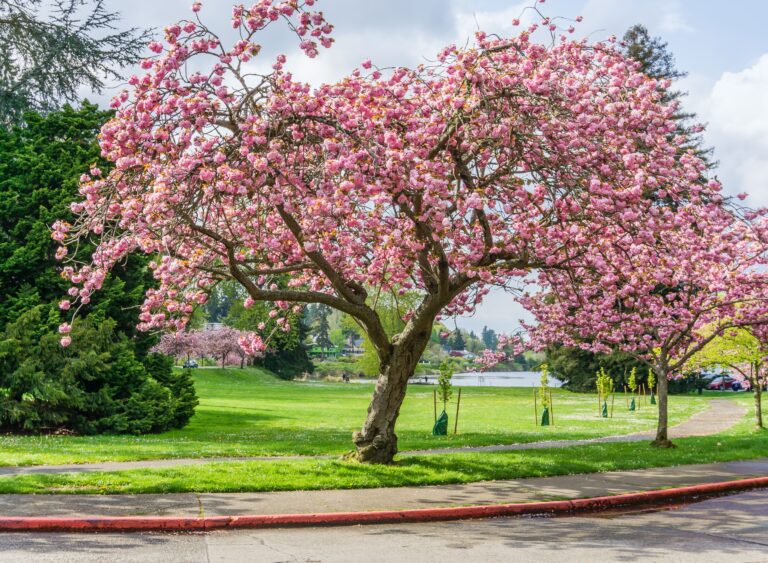The Best Time to Visit Olympic National Park: Complete Guide
Olympic National Park encapsulates the absolute best of the Pacific Northwest. This natural behemoth stretches down the Olympic Peninsula and the western coast of Washington State.
Sweeping, rugged coastlines that are as dreamy as they are dreary. Dense old-growth forests packed with magnificent giant firs and cedars elegantly draped in moss. Majestic mountains with snow-dusted ridges, wildflower-sprinkled meadows, and abundant wildlife. Deep lakes, roaring waterfalls, and rushing rivers.
While it sounds almost too good to be true, all of these ecosystems thrive within the boundaries of Olympic National Park, home to some of the most diverse and extraordinary offerings of flora and fauna in the contiguous United States.
Due to the ever-shifting nature of the park throughout the seasons, the best time to visit Olympic National Park is debatable.
As a native of Washington State, I was fortunate to call spots like Olympic National Park my playground. Trips to the park as a kid with my family planted seeds of nostalgia that have kept me visiting different areas of the Olympic National Park from college days at University of Washington through my 20’s and 30’s whenever I return to the region.
I’m innately drawn to the mountains and forests and have scoured the trails of the Olympic Mountains and Hoh Rainforest time and again. Admittedly, the moody Olympic Coast holds a special allure that transforms it into more than the typical beach destination, captivating even beach skeptics like me.
Whichever season you choose to visit Olympic National Park during, you’re sure to be amazed.
Planning a Trip to Olympic National Park? We’ve got a few other guides to help you plan an amazing trip. Check out our guide to planning your Olympic National Park itinerary, the best hikes in Olympic National Park, and the best places to stay in Olympic National Park to help you plan an unforgettable adventure out on the Olympic Peninsula.
Disclaimer: Some of the links below are affiliate links, which means that if you click on one and purchase something, we make a small portion of the sale at no additional cost to you. It goes without saying that we would never recommend something we wouldn’t use or do ourselves.
What Is the Best Time to Visit Olympic National Park
Are you wondering what the best time is to visit Olympic National Park? It really depends on what you’re looking to experience, as each season in the park is unique and comes with its own set of pros and cons (which we’ll cover below).
Summer and fall are the two most popular times of the year to visit Olympic National Park and are the seasons when the park is most accessible. However, weather during these seasons can still be unpredictable.
Winter and spring offer their own benefits and shouldn’t be overlooked because the regions throughout Olympic National Park—from the Olympic Mountains to Lake Crescent, the rainforests, and the Olympic Coast— each offer their own adventures and landscapes that transform across the seasons.
This guide will break down the basics of the park for you by season so you can decide when to visit Olympic National Park based on your particular interests, and what to expect when you arrive.
Summer in Olympic National Park
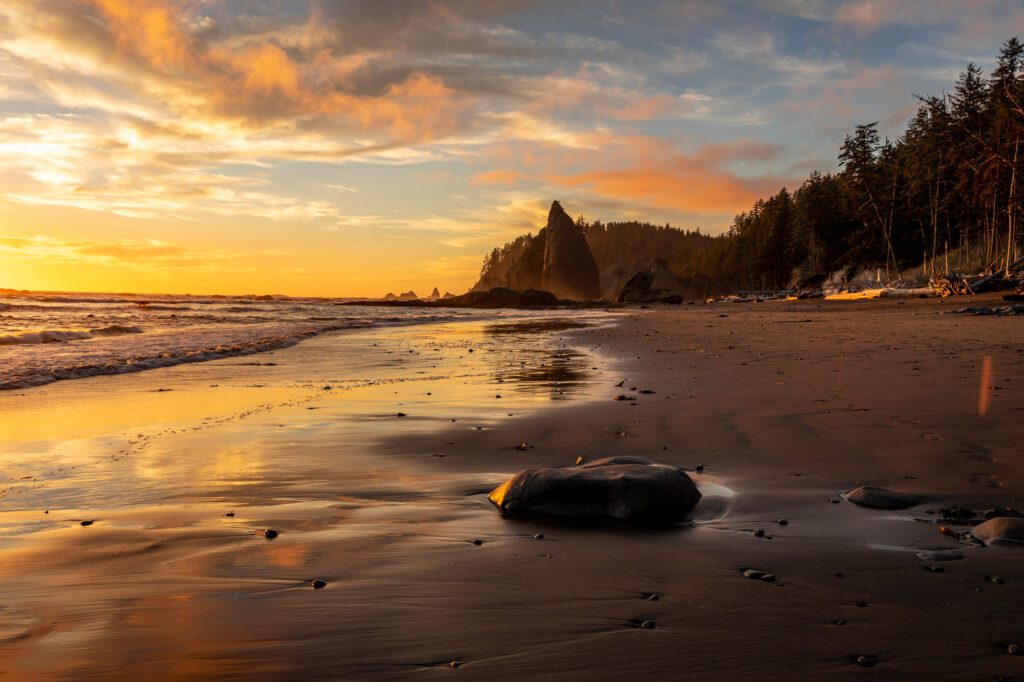
Summer in Olympic National Park is undeniably spectacular.
Snow has melted off the trails in the Olympic Mountains, temperatures are mostly warm, vegetation is in full bloom, and you may even be tempted to take a dip in a lake or the ocean.
Expect the standard for most destinations in the Pacific Northwest during summer, with blue skies and warm, long days. However, weather can still be quite temperamental in areas of Olympic National Park, even during the summer.
The rainforests and Pacific Coast experience more precipitation and gray, chilly days than other areas of western Washington during summer.
Crowds will be another factor you’ll have to contend with. When the sun comes out, so do the people, which means you’ll want to plan ahead for accommodation, camping permits, and access to trails and certain areas of the park.
Temperatures and Rainfall in the Summer
As Olympic National Park transitions into its summer season in June, temperatures become consistently warm-ish (it is the Olympic National Park, after all, which rarely gets hot) and precipitation drops.
June: June, the start of summer in Olympic National Park, is mild and pleasant. Temperatures typically range between 46- and 68-degrees Fahrenheit. The weather is starting to dry up, though June still receives about 1.2 inches of precipitation.
July: Summer is in full swing in the park by July, which experiences warmer temperatures and less precipitation. Temperatures typically range between 50-and 74-degrees Fahrenheit. July is typically the driest month, experiencing less than an inch of rain on average.
August: The peak of summer in the park is August, which is also typically the hottest month in Olympic National Park. Expect temperatures to fall between 51- and 74-degrees Fahrenheit and just over an inch of rainfall.
Pros and Cons of Visiting Olympic National Park in the Summer
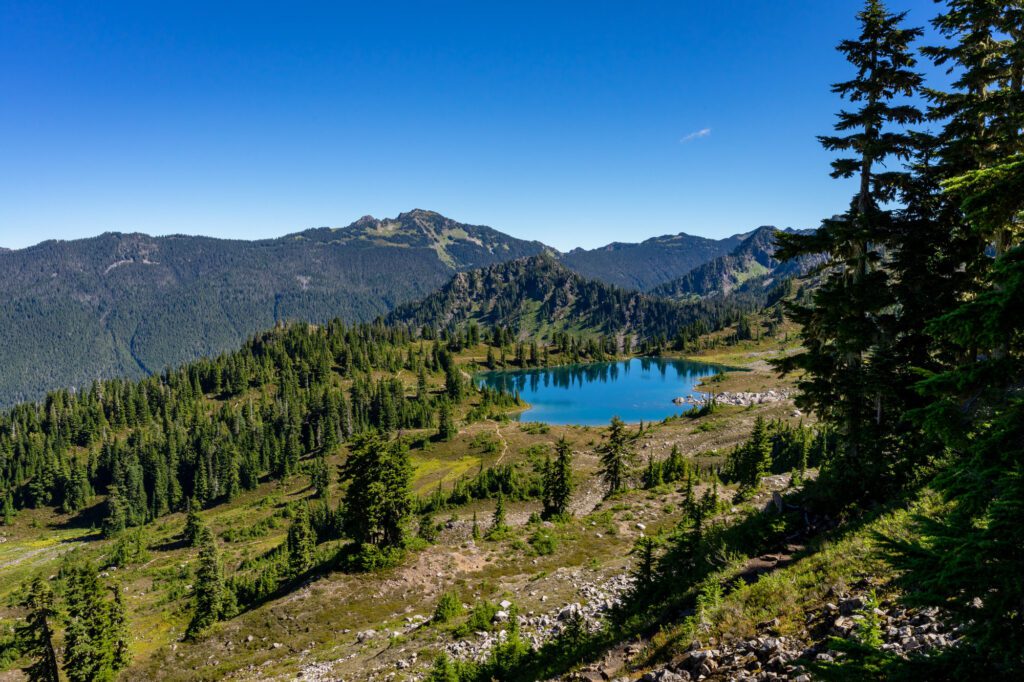
Pros of summer in Olympic National Park
- Optimal weather and maximum daylight. Despite its unpredictability, weather is still at its best during summer. Olympic National Park rarely gets too hot, so when the sun is out, it’s the perfect season to be outside and enjoy the Olympic Mountains, lakes, beaches, and rainforests alike. And, late sunsets allow you to make the most of the long days of summer with the sun setting after 9pm during summer.
- Unrestricted access to nature. Some areas of the park aren’t accessible during certain periods of the year. During summer, however, snow will be melted from even high elevation trails, all roads will be open, and access to the park is completely unrestricted. In July and August, wildflowers will be in full bloom, particularly brilliant around Hurricane Ridge. Summer months are also the best time to take a dip in the lake or in the Pacific Ocean.
Cons of summer in Olympic National Park
- Crowded trails and campsites. Like most destinations in western Washington, Olympic National Park draws visitors by the dozen in summertime. This means you’ll be competing for space on the trails and beaches, parking space will be limited, and camping permits will be difficult to obtain. It’s best to plan ahead and make camping or accommodation reservations in advance when possible. Even if you make it in successfully, finding a serene corner of the park can prove to be challenging as campsites and trails will be abuzz with both locals and visitors from afar.
- Long lines. Crowded trails and campsites also means long lines, particularly at some of the most popular areas in Olympic National Park. For spots like the Hoh Rainforest and Hurricane Ridge, plan accordingly to avoid lines and ensure a hassle-free experience. You should aim to arrive before 10am for your best bet at finding parking and avoiding long wait times at the entrance to the Hoh Rainforest. There’s a single-lane only entrance to the Hoh Visitor Center and cars will have to wait in line for others to exit once the lot has reached capacity.
Fall in Olympic National Park
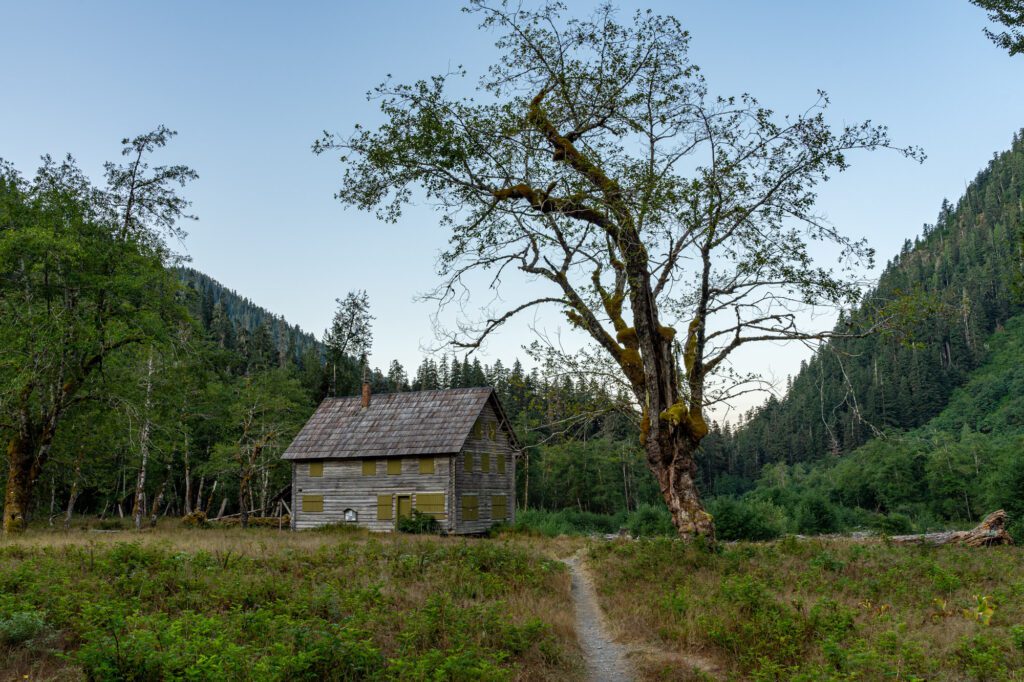
Fall in Olympic National Park means cooler, often drizzly days combined with vivid autumnal hues. This season is fantastic for forest, mountain, and coastal hikes, particularly during the first half of fall.
One of the major upsides is that the hecticness of summer will have largely subsided, so you’ll be able to experience the park without the summer crowds, particularly if you pay a visit during the week.
Temperatures and Rainfall in the Fall
While the transition from summer into fall starts out gradually, temperatures quickly drop as the days get shorter and precipitation levels rise as the park heads into October. In general, the weather is relatively mild with chilly temperatures and frequent rain.
September: The end of summer and the transition into fall makes September a memorable and typically enjoyable month in Olympic National Park. Temperatures are still mild with the low around 47.5 degrees, though a significant drop in the upper range falling around 68.5 degrees Fahrenheit. September is still a relatively dry month, usually experiencing just under 2 inches of rain.
October: Temperatures steadily drop as fall forges along. October’s temperatures range between 41- and 57-degrees Fahrenheit. Precipitation sharply spikes, with rainfall averaging around 5 inches during October.
November: The mild fall months become properly chilly by November, which experiences an average range of 36 to 46 degrees Fahrenheit. November is also one of the wettest months, typically seeing just over 9 inches of rain.
Pros and Cons of Visiting Olympic National Park in the Fall
Pros of Visiting Olympic National Park in the Fall
- Fall foliage. While not all areas of Olympic National Park stand out for fall foliage, there are a few spots that experience a colorful transition. Lake Crescent is pretty spectacular year-round, but its beauty particularly shines from September through November when rich hues of autumn contrast against the vivid blue waters of the lake. Mount Storm King is a phenomenal fall hike to witness the changing colors. Strolls along the Hoh River from the Hoh Rainforest Visitor Center will also bring views of brilliant orange and yellow leaves. Don’t forget to look down as you amble through the Hoh- the forest floors will also spring to life with colorful mushrooms this time of the year.
- Fewer crowds. Summer madness will have died down by mid-to late September. While the park still will receive its fair share of visitors during fall weekends, weekdays will be much quieter and easier to experience Olympic National Park in the quiet.
Cons of Visiting Olympic National Park in the Fall
- High precipitation and cooler temperatures. As the crowds thin out, the rains pick up at the start of the rainy season in Olympic National Park. Snow will dust the higher elevation regions by late October or early November and the forest can become incredibly wet. Expect soggy trails, overcast skies, and cool temperatures. Not necessarily the perfect conditions for a sun-soaked beach stroll or camping trip, however the forest canopy does protect you from some of the rainfall.
Winter in Olympic National Park
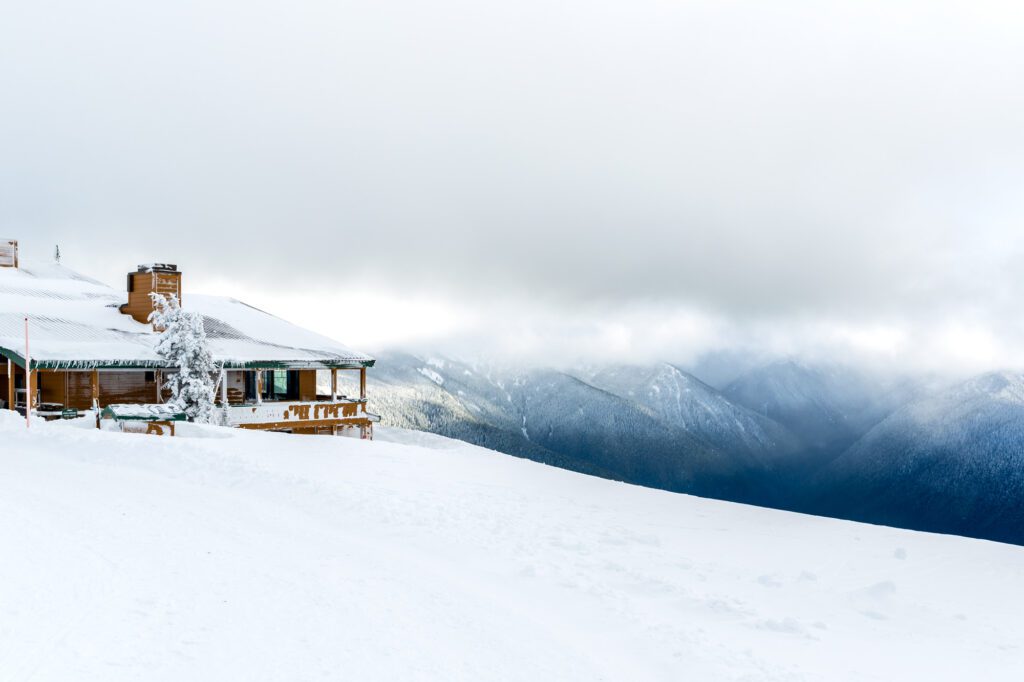
Winter in Olympic National Park is entirely unique to the other seasons in the park, with highly variable experiences from the Olympic Mountains to the Pacific Coast.
The high-elevation trails of Hurricane Ridge are snow-covered by late October or early November and stay that way well into spring or early summer. With the right equipment, you can experience the winter magic of the Olympics by snowshoe, skis, or sled.
One of the biggest perks of Olympic National Park during winter in comparison to other national parks in Washington is that the majority of the roads stay open during the winter season. Hurricane Ridge has limited accessibility, though remains open Friday through Sunday weather permitting.
Temperatures and Rainfall in the Winter
Winter is a wet, cold, and dark season in Olympic National Park. This time of the year experiences the highest rainfall, the lowest temperatures, and the least amount of daylight.
The upside? In the higher elevation areas this means fresh snowfall!
December: December brings cold temperatures and high precipitation as winter sets in the park. On average, temperatures fall between 32 and 42 degrees. December is the rainiest month usually, seeing nearly 10 inches of rain on average.
January: Temperatures continue to drop in Olympic National Park through January. This is typically the coldest month of the year, with temperatures between 31 and 40 degrees. January is also really rainy with about 9 inches of rainfall.
February: The last month of winter, February is still frosty. In February, expect an average temperature range between 32 and 45 degrees. Although still very wet, there is a significant drop in rainfall, with approximately 7 inches.
Pros and Cons of Visiting Olympic National Park in the Winter
Pros of Visiting Olympic National Park in the Winter
- Minimal crowds. As Olympic National Park is commonly thought of as a seasonal destination, there is a drastic drop in visitors come wintertime. This means that you’ll be left to enjoy the park in relative peace. While days might be shorter and cooler, the coast and the rainforests don’t receive much snowfall—if any at all—and are completely accessible even during winter months. Embark on an enchanting winter hike along a deserted beach.
- Winter wonderland landscapes. Hurricane Ridge is transformed by snowfall from November through March. While many of your typical trails aren’t accessible in winter, you have the opportunity to snowshoe, tube, and cross-country ski in the Hurricane Ridge part of the park. Or, you can simply marvel at the magical wintry scene of trees blanketed in snow. Winter weather gear is a must to stay warm and safe during this season.
Cons of Visiting Olympic National Park in the Winter
- Cold weather and shorter days. I’m certainly a fair-weathered person so even mild winter days are enough to deter me from outdoor activities. Although not as frigid as Hurricane Ridge, even the sea-level destinations in Olympic National Park will still be cold during the winter. Another downside? Limited sunlight and daylight. You’ll have to fit your outdoor adventures into a much shorter window of time in the winter and shouldn’t count on the sun coming out.
- Restrictions on higher elevation sections. Some
areas of Olympic National Park are inaccessible, or have limited accessibility, during winter. The road to Hurricane Ridge is only open during weekends and is still contingent on favorable conditions. If you’re making the journey to Hurricane Ridge during winter, make sure that you have a high clearance vehicle that is equipped with chains.
Spring in Olympic National Park
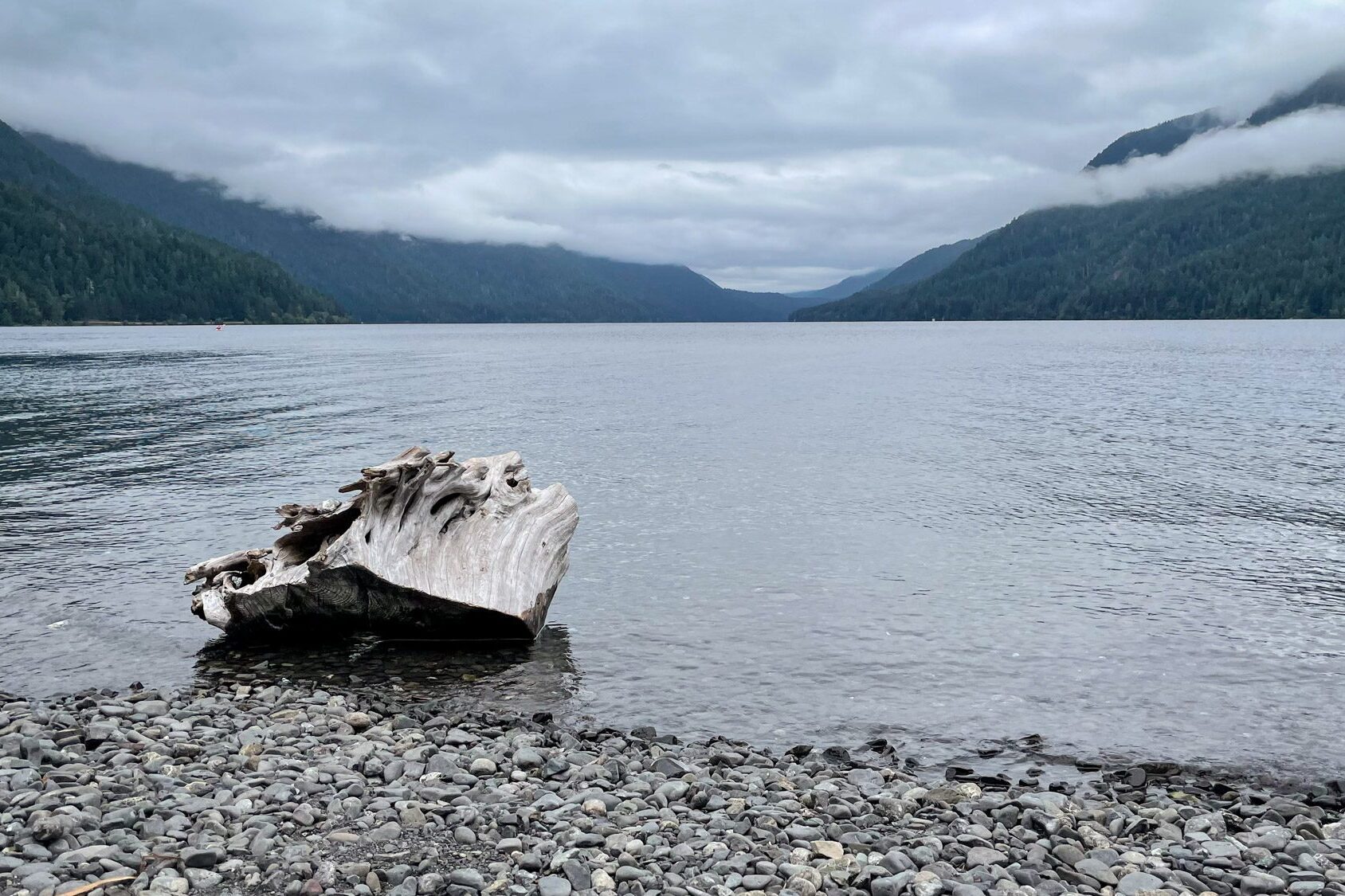
Spring beckons in new life in Olympic National Park. The early days of spring may feel a bit stuck in winter, but as the season progresses, the park slowly wakes up from its winter hibernation.
Lakeside fields, grassy valleys, and mountain slopes spring to life with blooming wildflowers and young animals graze in forests and meadows.
Hurricane Ridge will still be snow-covered and while the rainforest and coastal region can still be quite damp and drizzly, they are fully accessible and free from the imposing crowds of summer.
Temperatures and Rainfall in the Spring
Winter lingers at first during this transitional season, which experiences significant rainfall and chilly weather. As spring begins to awaken, however, the weather warms up and dries off—as much as it can in this park known to be rainy, that is.
March: For being the first month of spring in Olympic National Park, March is still quite cool. The park is slowly starting to warm up, though, with temperature typically falling between 34 and 50 degrees. Rainy season is still in full swing in March, though, with about six inches of rain.
April: April is quite mild—neither too hot nor too cold, though it can be quite wet. The average temperatures range between 37 and 57 degrees. Precipitation is starting to drop during April, which typically experiences an average of 3 inches.
May: May is usually a pleasant month in Olympic National Park, with some of the better sides of spring finally coming through. Temperatures are usually between 42 and 63 degrees and rainfall is under 2 inches on average.
Pros and Cons of Visiting Olympic National Park in the Spring
Pros of Visiting Olympic National Park in the Spring
- Renewed vegetation and blooming flowers. After a long, dark, wet winter, springtime is a breath of fresh air in Olympic National Park. Waterfalls are roaring with fresh snowmelt and are at their most vibrant in the spring. Wildflowers are slowly blooming, and the vegetation is lush and vividly green. Low elevation hikes will be clear of snow at this time, with fantastic options to waterfalls and through colorful flower fields. Sol Duc Falls, Pony Bridge through the Enchanted Valley in Quinault, and Falls Creek Falls are all fantastic spring hiking trails.
- Abundant wildlife. Just like the vegetation, wildlife in the park is waking up from a winter slumber as well. Olympic National Park is alive with wildlife and their new young, and whales are beginning their migration in early May. Keep watch for families with baby elk around the lakes and in the rainforests or try your luck at whale watching along the Pacific Coast. Birdwatching is also popular this time of the year.
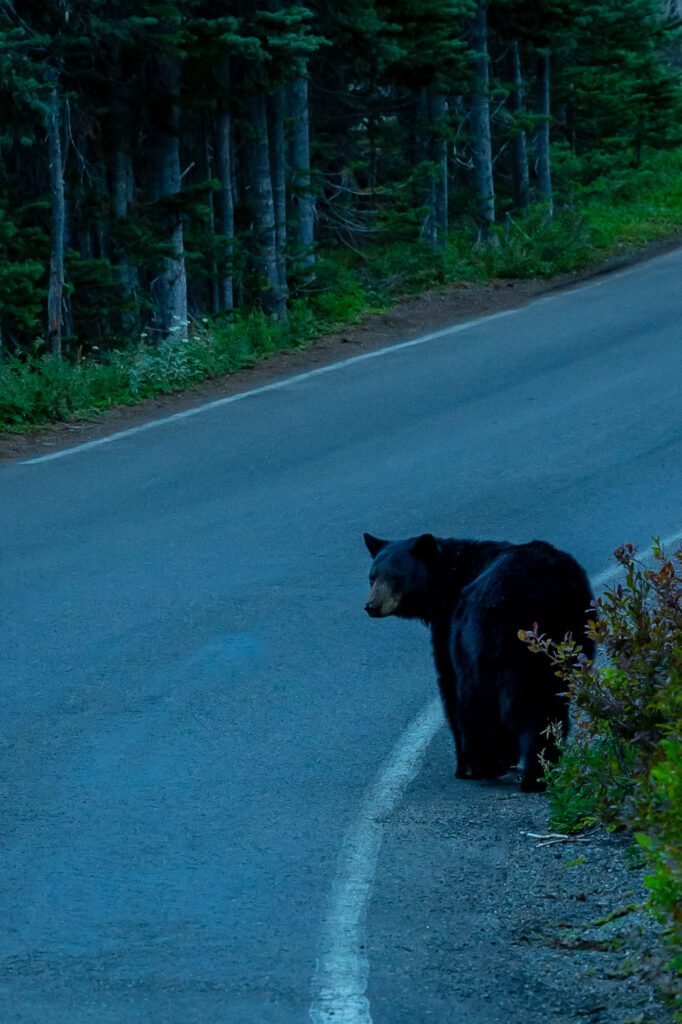
Cons of Visiting Olympic National Park in the Spring
- Unpredictable weather. Although it’s no longer in the depths of gloomy winter, spring weather can still be unpredictable in Olympic National Park. Precipitation is still high, and temperatures can vary drastically between the mountains and the coast. Speaking of the coast, it is fairly windy during spring. It is always best to come prepared with rain gear and layers. Spring isn’t the most ideal time for camping, though you can try your luck in May, as sunny days are intermittent.
- Limited trail accessibility. Not all of the hiking and biking trails in Olympic National Park are open by the spring. Most of the higher elevation trails in the Olympic Mountains, Hurricane Ridge in particular, are still buried under a blanket of snow and won’t be accessible until July.
More to Explore in Washington State
- The Best Things to Do in Seattle, Washington
- A Weekend in Seattle: A Seattle Itinerary for First Timers
- Where to Stay in Seattle: A Complete Neighborhood Guide
- The Best Day Trips from Seattle: 10 Great Options
- The Best Weekend Getaways from Seattle
- The 17 Best Hikes Near Seattle (Local’s Guide)
- 16 Incredible Hikes in Washington State
- The Best Easy Hikes in Washington State
- The Best Cozy Cabin Getaways in Washington State
- The 3 Amazing National Parks in Washington State
- The Best Hikes in Mount Rainier National Park
- A Complete Olympic National Park Itinerary
- How to Plan a Perfect North Cascades National Park Itinerary
- 15 Gorgeous Waterfalls in Washington State
- How to Plan an Amazing Washington Road Trip Itinerary

